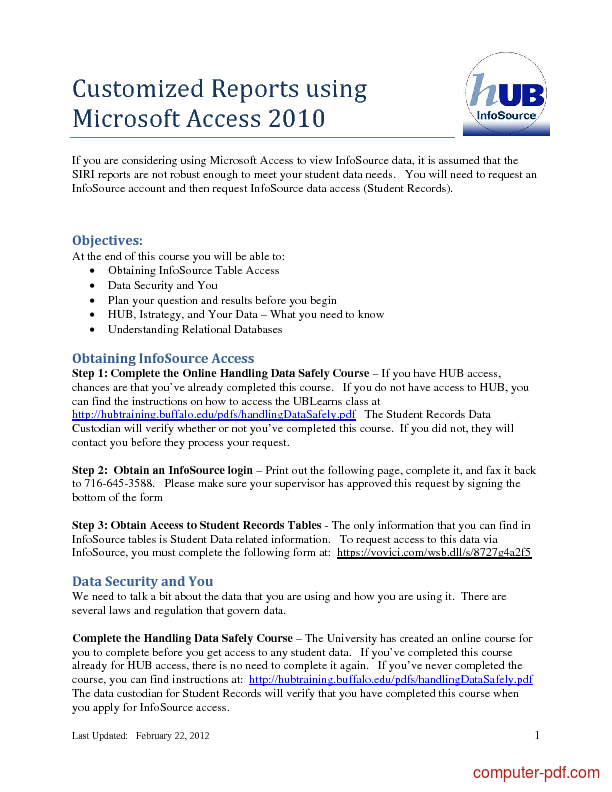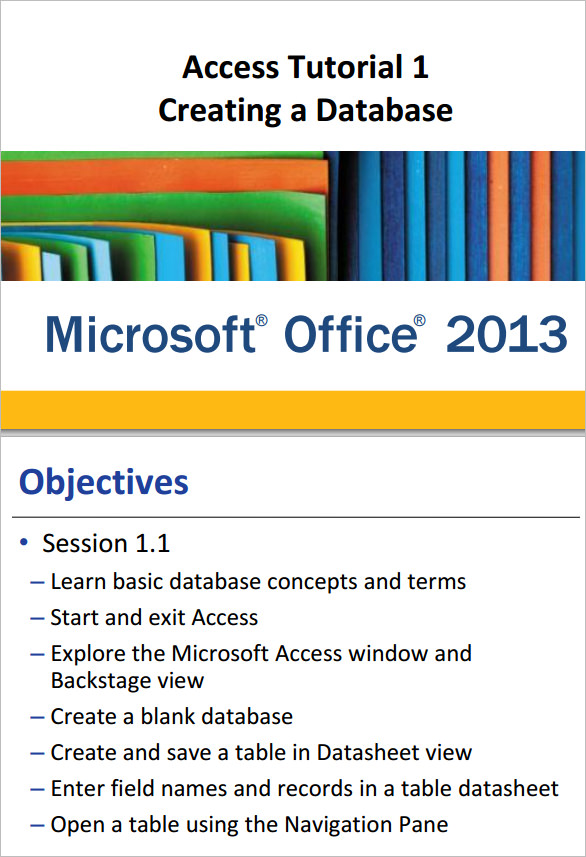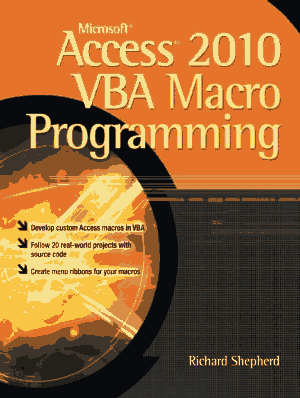

Scroll bars (vertical, horizontal) – move up and down rows, through pages of records, or across several columns. Movement Keys Tab, Enter – move you from field to field. Move to first record Move back one record Move forward one record Move to last record Move to new record - Total number of records in the table TABLES Record (row) Field (column) Navigator Scroll Bars Favorites The Favorites folder stores shortcuts to frequently used file folders and databases. For example, you may group a Form together with its Subforms and the Tables and/or Queries that the Forms are based on. You can keep related objects of different types together in a group. Groups A Group consists of shortcuts to the database objects that belong to it. Command buttons you to Open an existing database, modify the Design of an existing database or create a New database. Object Tabs Allow you to see a list of all objects in that category: Tables, Queries, Forms, Reports, Macros, and Modules. They will change depending on the functions you are currently performing. Report A report extracts selected data from a table (or query) and formats it for printing.ĭATABASE WINDOW COMPONENTS Menu Bar Command Buttons Object Tabs FavoritesĭATABASE WINDOW COMPONENTS Menu Bar This toolbar contains commands and submenus. It is used to enter new data into the database or display existing data. Form A form is a graphical template based on a table (or query). Query A query extracts selected data from a table (or another query) and presents it in spreadsheet format. The record is made up of several fields each field contains one piece of information relating to the item (e.g., employee's name, address, phone, etc.). Each row (or record) contains information about a particular item (e.g., an employee). Table A table is the basic element of a Database and contains the data entered by users.


Microsoft Access uses four objects to create a Database: Relational databases allow you to organize your data into tables each table focuses on a specific topic the various tables can then be linked to each other for inquiry and reporting purposes. ACCESS is a relational database management system. Select a file from list of files presented in the open window ĪCCESS DATABASE: Relational Databases.File name: type a file name for the database.Save in: - click the drop down arrow click location to save database.Click Start, Programs, Microsoft Access.OBJECTIVES Its our promise that by the end of this presentation, you will be able to:


 0 kommentar(er)
0 kommentar(er)
